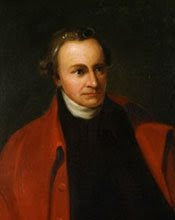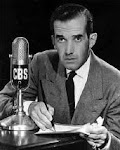
Did you know ... a law passed to protect people from stalkers is being used by the government to prosecute protesters
One of the most heartbreaking articles I have ever read was a response column published recently in the Guardian. Edward Countryman explained that he was writing on behalf of his wife, Evonne Powell-Von Heussen, "who could not bear to face" the unintended consequences of the thing she had created.
For 17 years she was the victim of an aggressive stalker, who attacked her and held her captive. She spent five years running a brave and vigorous campaign for an anti-stalking law, to ensure that nobody else's life could be ruined as hers was. Now she has seen how that law – the 1997 Protection from Harassment Act – is being used for a completely different purpose. She is so upset by the "perversion of its intentions" that she cannot bring herself to confront it.
Powell-Von Heussen "took great care that the act would protect frightened, endangered individuals from their assailants, and only such persons". But the first three people to be prosecuted under it were all peaceful protesters. Since then it has been used by the police and courts to criminalise almost all forms of dissent.
The law creates an offence of pursuing "a course of conduct which amounts to harassment of another". Harassment is defined as "alarming the person or causing the person distress". The act can be used to impose injunctions on people, criminalising their previously lawful activities. As the injunctions use civil law to create criminal offences, they require a much lower standard of proof: hearsay evidence and untested and unproven allegations can be used to criminalise any action the police or the courts wish to stop.
In 2001, the act was used to prosecute protesters outside the US intelligence base at Menwith Hill, who were deemed to have distressed American servicemen by holding up a placard reading "George W Bush? Oh dear!" In the same year a protester in Hull was arrested under the act for "staring at a building". In 2004, police in Kent arrested a woman who had sent two polite emails to an executive at a drugs company, begging him not to test his products on animals. In 2007, the residents of a village in Oxfordshire were injuncted from protesting against a power company's plan to fill their lake with fly ash – in case they caused alarm or distress to the company's burly security guards.
Having discovered what a useful tool it had become, in 2005 the government amended the act in a way that seemed deliberately to target peaceful protesters and smear them as stalkers. Originally you had to approach one person twice to be "pursuing a course of conduct"; now you need only approach two people once. In other words, if you hand out leaflets to passers-by which contain news that might alarm or distress them, that is now harassment. The government slipped in a further clause, redefining harassment as representing to "another individual" (ie anyone) "in the vicinity" of his or anyone else's home (ie anywhere) "that he should not do something that he is entitled or required to do; or that he should do something that he is not under any obligation to do". This is, of course, the purpose of protest. These amendments, in other words, allow the police to ban any campaign they please. Surreptitiously inserted into the vast and sprawling 2005 Serious Organised Crime and Police Act, they were undebated in either chamber of parliament.
So who can blame Powell-Von Heussen for being unable to face the monster to which she unwittingly gave birth? The government, police and corporations have used the law she requested to ban people from acting very much as she did: peacefully seeking to change the way the world is run.


















No comments:
Post a Comment